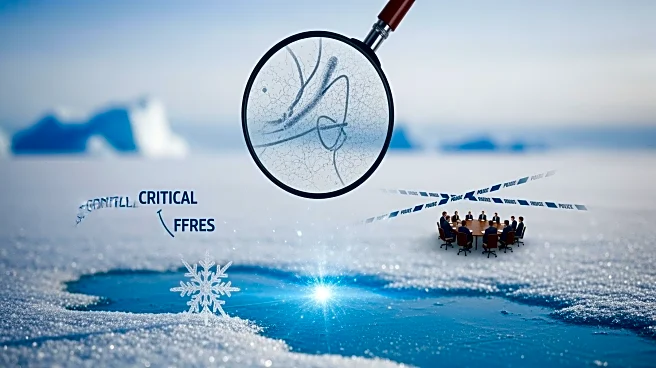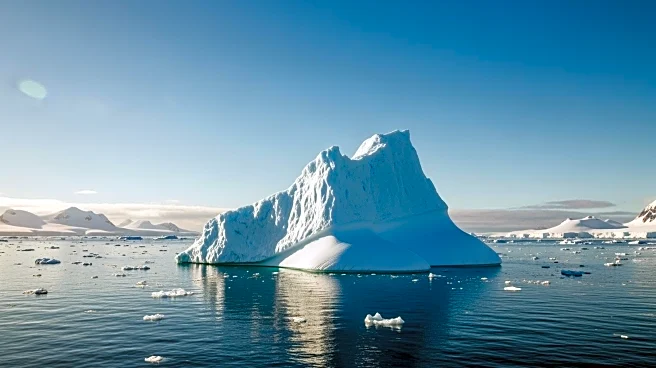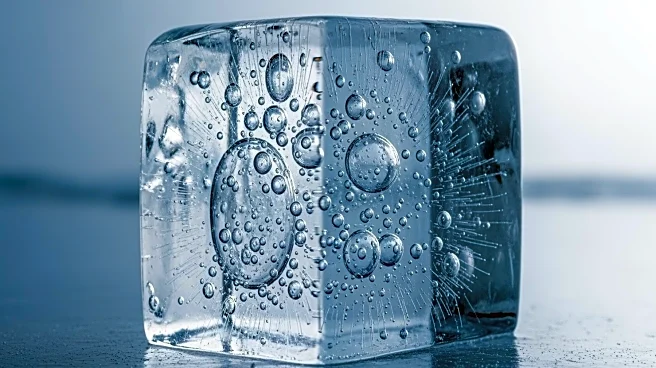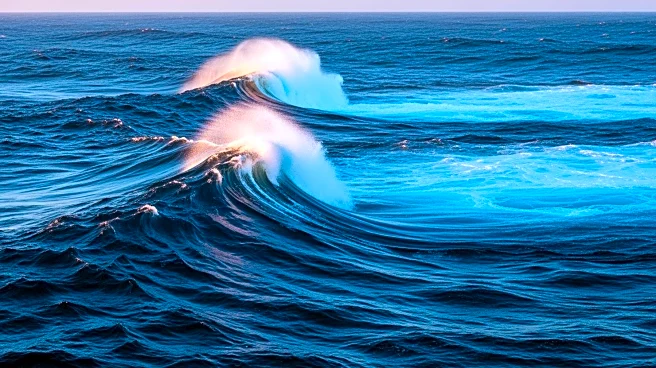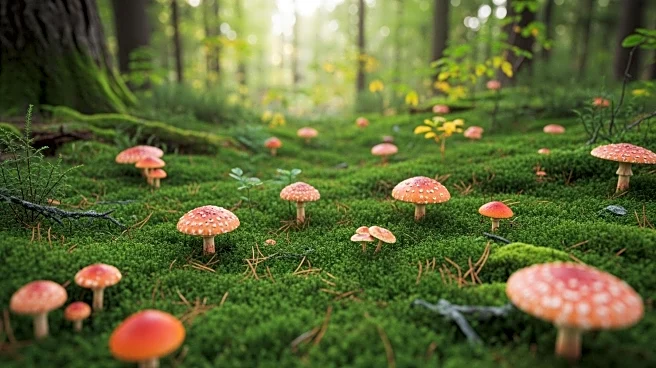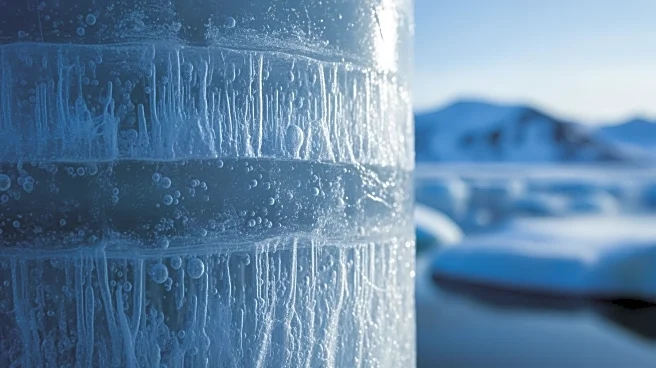What's Happening?
Scientists have discovered nitrogen-fixing microbes thriving beneath Arctic sea ice, a finding that challenges previous assumptions about nitrogen fixation in cold environments. These microbes, known as non-cyanobacterial diazotrophs (NCDs), have the
genetic capability to fix nitrogen, a process essential for ecosystem sustainability. Historically, nitrogen fixation was believed to occur only in warm, tropical waters. The presence of these microbes under sea ice suggests a previously overlooked source of nitrogen fixation in the Arctic, potentially impacting marine food webs and atmospheric carbon dioxide levels.
Why It's Important?
The discovery of nitrogen-fixing microbes in the Arctic has significant implications for climate models and ecological studies. As Arctic ice melts due to climate change, the proliferation of these microbes could alter marine ecosystems by supporting algae growth, which in turn affects the entire food chain. Increased algae production could enhance carbon dioxide absorption, influencing global climate patterns. Incorporating these findings into climate models is crucial for accurate predictions of future environmental changes and for developing strategies to mitigate climate impacts.
Beyond the Headlines
The presence of nitrogen-fixing microbes in the Arctic highlights the complexity of biological systems and the need for comprehensive research to understand their role in global nitrogen cycles. This discovery prompts a reevaluation of ecological dynamics in polar regions and underscores the importance of interdisciplinary approaches in climate science. The potential for these microbes to influence carbon sequestration and ecosystem productivity presents new opportunities for research and conservation efforts.
